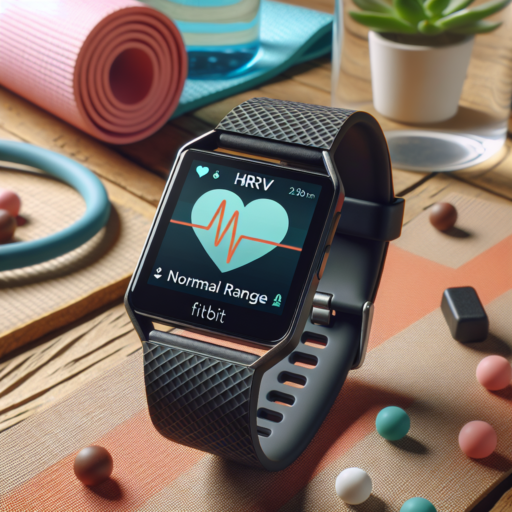What is HRV in simple terms?
Heart Rate Variability (HRV) is a measure that captures the variation in time between each heartbeat. Unlike the constant beat we might envision, our hearts actually speed up and slow down with each breath we take. In simple terms, HRV is an indicator of how adaptable your heart is, reflecting your overall health and wellness. A higher HRV suggests a healthy, responsive cardiovascular system, while lower values can indicate stress, fatigue, or underlying health issues.
At its core, HRV is deeply rooted in our body’s autonomic nervous system, which regulates our heart rate, digestion, and respiratory rate, among other functions. This system has two main components: the sympathetic (fight or flight) and the parasympathetic (rest and digest). The interplay between these two systems affects the variability in our heartbeats. A greater amount of variability means your body is better at adapting to stressors and efficiently managing your bodily functions.
Monitoring your HRV can provide valuable insights into your stress levels, recovery status, and overall cardiovascular health. Technological advancements have made it easier to track HRV through wearable devices and smartphone apps, allowing individuals to take a proactive approach to managing their health. By understanding and observing changes in HRV, you can make informed decisions about lifestyle adjustments, stress management techniques, and exercises that contribute to improved heart health and resilience against stress.
No se han encontrado productos.
What is a good HRV score?
Understanding what constitutes a good HRV (Heart Rate Variability) score is crucial for anyone looking to improve their overall health and wellness. HRV measures the variation in time between each heartbeat, indicating the health of the autonomic nervous system. A higher HRV means your body is better at adapting to stress, recovering from exercise, and maintaining a balanced health state.
A good HRV score generally ranges between 50 to 100 milliseconds (ms) for most adults, but it’s important to note that HRV can significantly vary among individuals. Factors such as age, fitness level, lifestyle, and stress levels can all influence one’s HRV. Therefore, comparing your HRV score to general averages should be approached with caution; it’s more beneficial to monitor your own HRV trends over time.
Improving your HRV score is possible through various methods such as regular exercise, stress management, and adequate sleep. Incorporating mindfulness practices like meditation and yoga can also contribute to a healthier autonomic nervous system, potentially increasing your HRV score. Ultimately, understanding and monitoring your HRV can provide insightful data on your body’s capacity to handle stress and perform optimally.
What is a dangerously low HRV?
Heart Rate Variability (HRV) is a critical measure of the variation in time between each heartbeat. This metric is often seen as a mirror to the autonomic nervous system’s (ANS) functionality, reflecting our body’s capacity to manage stress, recover, and maintain a balanced state. Dangerously low HRV scores indicate a lack of variability in heartbeats, suggesting that the body might be under extreme stress, facing challenges in recovery, or potentially indicating underlying health issues. It’s a stark reminder of the body’s struggle to adapt to stressors and maintain homeostasis.
Identifying a dangerously low HRV can be complex as it varies significantly among individuals. However, consistencies in medical research and guidelines point out that any substantial deviation below one’s baseline without clear cause warrants attention. This deviation, particularly when sustained over time, might signal an impaired ANS, potentially elevating risks related to cardiovascular health, anxiety, depression, and other stress-related disorders. Therefore, monitoring HRV readings can be crucial in preemptive health management and interventions.
Moreover, factors influencing HRV are multifaceted, encompassing physical health, mental state, lifestyle choices, and environmental stressors. For instance, excessive physical overexertion without adequate recovery, chronic stress, poor sleep quality, and unhealthy dietary habits can all contribute to lowering HRV to a dangerous level. Recognizing and addressing these factors is essential in improving HRV and, by extension, overall well-being. Monitoring tools and strategies have become increasingly accessible, allowing individuals to track their HRV and make informed health decisions.
What is the best exercise to increase HRV?
When discussing the best exercise to increase Heart Rate Variability (HRV), it’s essential to understand that optimizing HRV is about balancing the autonomic nervous system. Aerobic exercises are often cited as the most effective way to enhance HRV by boosting the parasympathetic (rest and digest) response, which is crucial for recovery and stress management.
High-Intensity Interval Training (HIIT)
One of the most beneficial exercises for improving HRV is High-Intensity Interval Training. HIIT involves short bursts of intense activity followed by periods of rest or low-intensity exercise. This type of training can significantly increase cardiovascular health, subsequently leading to improved HRV. It’s crucial, however, to tailor the intensity and rest periods to your current fitness level to avoid excessive stress on the body, which can counteract the positive effects on HRV.
Yoga and Mindful Movement
Apart from HIIT, integrating yoga and mindful movement practices into your routine can also have a substantial impact on HRV. Yoga, known for its ability to decrease stress and promote relaxation, can enhance parasympathetic activity, thus improving HRV. The emphasis on breath control and mindfulness in yoga helps regulate the heart rate, offering a dual benefit of physical exercise and stress reduction.
Each individual’s response to exercise can vary based on numerous factors, including current fitness level, stress levels, and overall health. Therefore, it may be beneficial to experiment with different types of exercises and monitor your HRV response to find what works best for you. Incorporating a mix of aerobic, high-intensity, and mindful exercises may provide the most comprehensive benefits for HRV enhancement.




